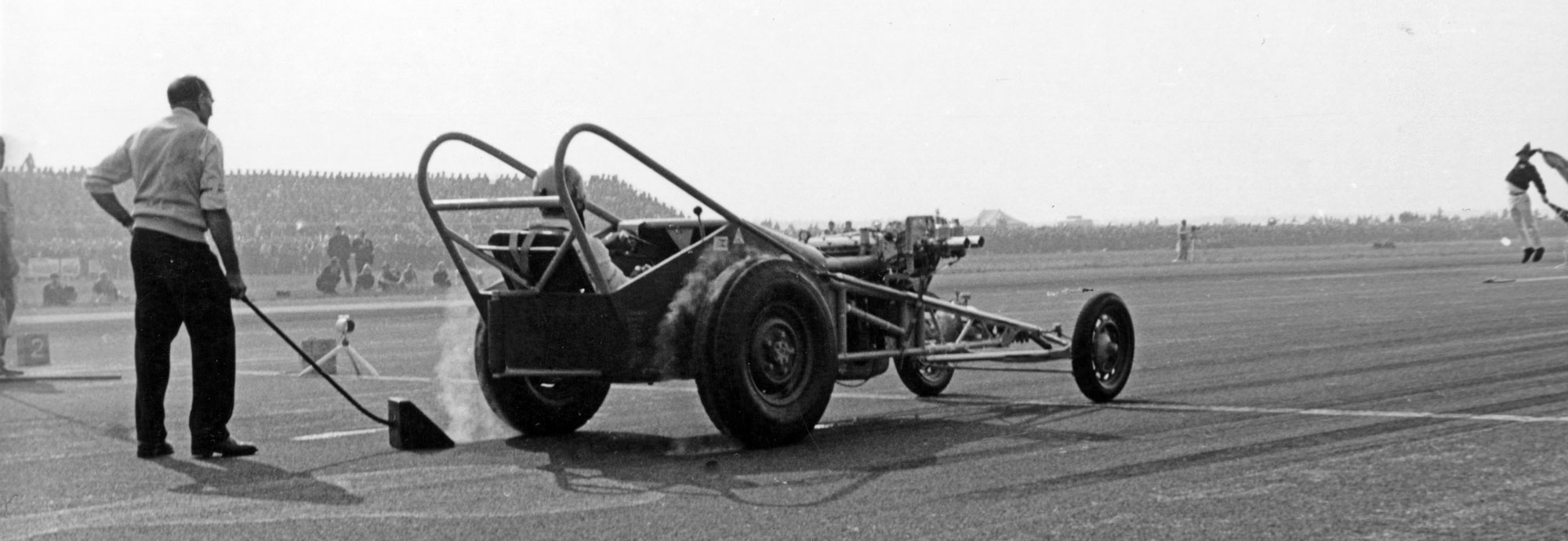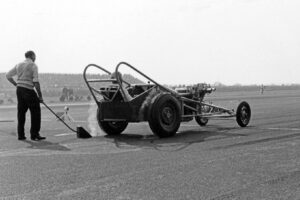
A major milestone in the history of British motor sport is being celebrated with an enthralling new exhibition at the National Motor Museum, Beaulieu.
Burnout! 60th Anniversary of British International Drag Racing Festival, in the museum’s In Focus gallery, presents a fascinating display recounting the 1964 International Drag Racing Festival was the first large scale event to bring the motor sport, which was hugely popular in America at the time, to the United Kingdom.

Drag racing, born from the Hot Rod scene of 1930s America, involves two specially adapted vehicles racing side by side at extreme speeds, fuelled by petrol or nitromethane over a quarter mile distance or 440 yards. Winners are decided through a knockout competition format.
The exhibition, which is on until 2 February 2025, is a community collaborative project. The National Motor Museum Trust partnered with the British Drag Racing Historians (BDRH) who researched and curated items for this exhibition from its members’ private collections and other archives recommended by the group.
The museum’s Library Curator, Carina Taylor says, “As one of Britain’s foremost motoring museum we love to share stories of motoring history. It’s been very interesting working with the Drag racing community on this display which celebrates the heritage of this very distinct and thrilling sphere of motor sport.”

The exhibition is supported by the National Lottery Heritage Fund, and members of BDRH, particularly John Hunt and Nick Pettitt, organised and managed research for the project. John Hunt says, “As a dedicated group of enthusiasts, we’re all very proud and grateful for this opportunity to have the 60th Anniversary of the 1964 British Drag Festival celebrated at the National Motor Museum at Beaulieu. This exhibition will give visitors a view and understanding of how the motor sport of drag racing started in England and then in Europe.”
Drag Racing Heritage
The National Motor Museum exhibition highlights the history of the first ever British International Drag Racing Festival held in the UK in 1964. It documents how, by the early 1960s, British motor sport enthusiasts had developed a drag racing scene inspired by American vehicles and culture and how they were inspired to organise a large-scale event, similar to those held in the US at the time, with American nitro-fuelled vehicles and top drag racing drivers. Sydney Allard, a UK car designer, and rally driver built the first British dragster in 1961 and later sold a smaller version in kit form. The scene gained momentum in 1963 when US drag star Dante Duce challenged Allard to a series of races in the UK.
Held at various venues, including Silverstone and the Brighton Speed Trials, the event sparked significant interest. To capitalise on this enthusiasm, Allard’s British Drag Racing Association (BDRA) undertook the challenge of organising a major event. Gerry Belton, BDRA’s General Manager, coordinated with Wally Parks, president of the US National Hot Rod Association, to bring 12 American drag vehicles to the UK to race at six one day meetings over three weekends. The events were held at Blackbushe Airport in Surrey and four other airfields, Chelveston, Woodvale, Church Fenton and Kemble, which were owned by the Royal Air Force. The Royal Automobile Club, responsible for UK motor sport competition and car building regulations, also supported the initiative.
Allard Chrysler Dragster

As well as the special exhibition, which is included in the Beaulieu attraction ticket, visitors to the National Motor Museum can also see the 1961 Allard Chrysler Dragster, which is on permanent display. The dragster was restored to full running order for the Museum ten years ago by the Allard Chrysler Action Group, a project sponsored by Lucas Oils.
Further details are available at nationalmotormuseum.org.uk.
